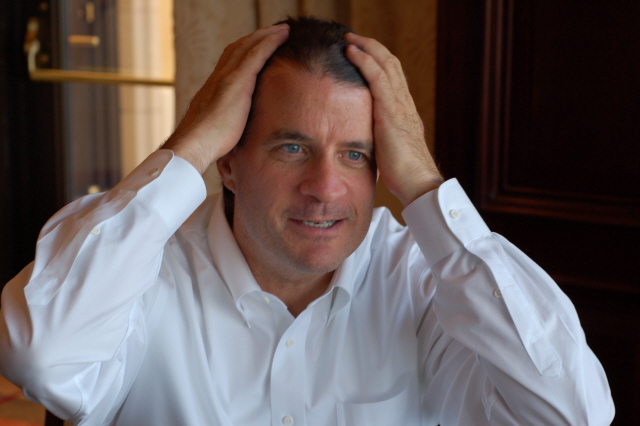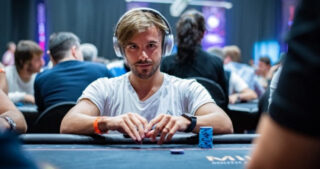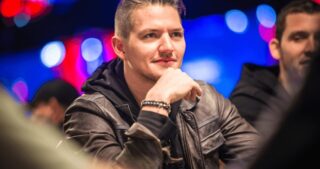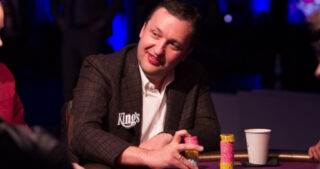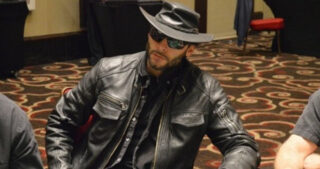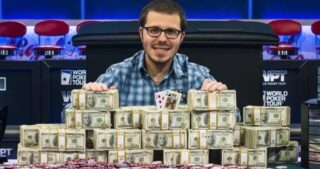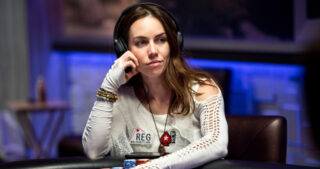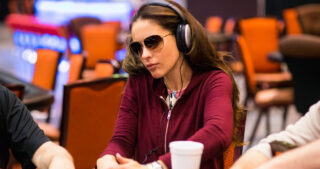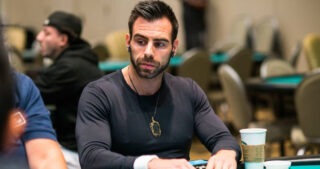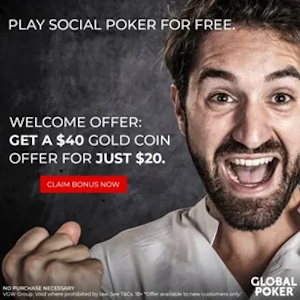Andy Beal, a self-made billionaire who amassed his fortune through real estate and banking ventures, hit the poker world like a freight train when he began playing the high-stakes cash games in Las Vegas in March 2001.
What started out as an unbelievable rumor was soon confirmed as fact: An unknown Texas billionaire was holed up at the Bellagio, taking on anyone who would play him for any stakes they could afford.
Despite his inexperience, however, Andy Beal would eventually prove himself as anything but a whale, facing down a series of pros in some of the highest-stakes poker games ever spread.
Top Entrepreneurial Mind
Beal has been incredibly successful in a wide range of business ventures during his life, and to call him one of the top entrepreneurial minds of the late twentieth century would not be overstating the facts.
Beal got his start in business as a child, buying broken televisions from the Salvation Army with the help of his uncle and repairing them for resale. A TV that cost about a dollar could be resold for $30 or $40 – not a bad profit for an 11 year old in 1963.
By the age of 17, Beal had graduated from televisions to residential security alarms and founded a company called Central Security Systems that installed systems, intercoms and antennas around his hometown of Lansing, Mich.
In 1971 Beal graduated high school and a few years later enrolled at Michigan State University, where he supplemented his studies with a few night courses at Lansing Community College.
With bustling business ventures always on the go, higher education wasn’t always his highest priority. But Beal stuck with it at his mother’s urging until he ultimately found it too difficult to balance both academic and business responsibilities and dropped out.
Andy Beal Finds Vegas
Not long after his twenty-first birthday, Beal made a visit to Las Vegas. Unlike the hordes of tourists who see Sin City as a chance to cut loose and blow through some of their savings, Beal saw Vegas as yet another way to turn a profit.
Always curious to find out how things really worked, be it televisions or blackjack, he began investigating and developing systems for counting cards. He was soon finding success in his latest scheme, sometimes netting up to $50,000 on a good trip to the city.
Back in Lansing, Beal was quickly expanding his business plan to include real estate. He opened his second business, Mid Michigan Building Movers, buying houses in bad districts at cut-rate prices and transporting them to more valuable locales.
Soon he’d accumulated 15 properties and was making a tidy monthly profit by putting them up for rent; it wasn’t long before he began trying to make the jump from single-family homes to apartment buildings, and after a few failed bids he successfully acquired a property in Waco, Texas.
At this point Beal liquidated his real estate assets in Lansing and moved to Waco to manage his new holdings full time. In an attempt to appease his mother he became a student at Baylor University but again was unable to find enough time to devote to his studies.
Beal Bank Grows Astronomically
Never content to stay stationary for long in the business world, Beal was soon exploring new areas of enterprise. While attending a real-estate seminar in Washington, DC, he became intrigued by the notion that thousands of people would willingly pay $100 a head to listen to the advice of so-called experts.
It was this observation that led Andy to found the National Institute for Continuing Professional Development (NICPD). In the late 70s to early 80s the NICPD held seminars in almost every major city in the U.S. Although Beal made a substantial profit from this venture it wasn’t long before he had moved on yet again and was back in the real-estate game.
Operating out of Dallas, Texas, Beal began expanding his property holdings and needed some form of financing. Unhappy with the options offered to him by the Texas Savings and Loan organizations, Beal was inspired by a friend of his who was granted a charter to open his own bank.
He obtained his own charter in 1985 and Beal Bank went into business a few years later. By 1996 Beal Bank’s assets had grown to a staggering $1.2 billion. From 1995 to 1996 the bank’s income had nearly doubled, from $27.5 to $48.8 million. By the year 1999 its annual income had reached $100 million.
Beal's Conjecture
With the success of Beal Bank came a strange new aspect of his life: the existence of free time. The business had become largely self-sufficient and as Beal was no longer needed to oversee its continuing operation he had plenty of time to wander off on his own peculiar tangents.
One of those tangents was advanced mathematics, which sparked an interest that would lead him to develop and publish a complicated proof that would eventually be heralded by the math community as a significant achievement.
The proof is particularly impressive given that Beal had only taken a few odd college classes in the subject.
Regardless of formal education, he was so confident in his knowledge of his new hobby that he offered a $100,000 prize to anyone able to either prove or disprove his calculations, which have come to be known as “Beal’s Conjecture.” The prize is still up for grabs.
Beal’s next venture took him into a sector even more outlandish than complex mathematics – aerospace technology. He founded Beal Aerospace Technology and began plans for a low-cost, reusable launch vehicle, with the vision of privatizing the space transportation industry.
Unfortunately, this aspect of Beal’s enterprise would prove to be one of the few that met with failure. Due to heavy competition from Lockheed Martin, Boeing and even NASA, Beal Aerospace was forced to cease all business operations in October 2000.
Beal Commits Hard to Poker
Failure did not deter him, however, and Beal soon moved on to other pursuits, eventually returning to Las Vegas for another crack at Sin City.
Indeed, it was a only a short time after Beal Aerospace closed its doors that its brainchild found himself outside the poker room at Bellagio, about to undertake a project as challenging as anything he had ever tried before: taking on the world’s best poker players for the highest stakes anyone in Vegas had ever seen.
His return would become the stuff of poker legend, pitting the then-unknown billionaire against a group of top professional poker players known as The Corporation. The group agreed to play Beal heads-up, his preferred style, for a go at his seemingly bottomless bankroll.
Prior to 2001, Beal hadn’t played poker in earnest. But after winning some medium-stakes games at the Bellagio, he got a rush and quickly upped his stakes. He boosted them so much, in fact, that he landed a game with poker royalty Todd Brunson. Beal then went on to challenge some of the most successful players in the game to heads-up play, often coming out on top.
Eventually it was Doyle Brunson who came up with the idea for The Corporation as a means of pooling enough money to play at Beal’s desired stakes and get around casino regulations that anyone who brings the cash to the table has the right to play.
What resulted was a series of now-legendary games that reportedly saw both Beal and the Corporation finishing millions of dollars in both the black and red.
Andy Beal vs. The Corporation
Andy Beal had never played poker seriously before he sat down at a $15/$30 Limit Hold’em table at Bellagio in March 2001, but his inexperience was no deterrent. After making a few hundred dollars at his first table he moved over to the $80/$160 table.
The next day he had advanced to $400/$800. Here, Beal finally got his first taste of what it was like to compete with the sharks in the form of a trial-by-fire heads-up match with Todd Brunson.
After Beal dominated his first session with Todd, he suggested they play higher. Brunson, ready to win back his money and aware that he had a live one on his hands, was enthusiastic, but even he was not ready for Beal’s proposed $10,000/$20,000 stakes – and that was just for openers.
The next day Beal played against some of the best players in the world at stakes starting at $1,000/$2,000 and reaching as high as $4,000/$8,000. Amazingly, he won more than $100,000 that day, vaporizing the hopes of the professionals who saw Beal as an easy mark with deep pockets.
Despite his success, Andy was nonplussed with the style of play at a full-table game. He had had a lot more fun with his heads-up match against Brunson, even at much lower stakes. The constant activity and aggressive nature of heads-up play was tailored more to Beal’s strategy and he felt it was in the heads-up arena that he would find the most success.
This posed a problem, because Las Vegas casinos are open to the public and anyone who can come up with the cash has the right to sit down and play. It was Doyle Brunson who came up with a solution that would not only give Beal the heads-up matches he was looking for but would also give the pros the bankroll to play Beal at the astronomical stakes he was proposing.
And so the group of big money pros which came to be known as “The Corporation” was born. The original group consisted of Doyle, Chip Reese, Jennifer Harman, Howard Lederer, John Hennigan, Chau Giangand David Grey. Over the next year or two it swelled to include Ted Forrest, Johnny Chan, Phil Ivey, Todd Brunson, Barry Greenstein and Lyle Berman, to name only a few.
When Beal next returned to Vegas, The Corporation had pooled together $1 million and was ready to take on Beal at limits of $15,000/$30,000. Beal’s first opponent was to be Chip Reese, arguably the best all-around player in the world.
Forrest Throws a Wrench in Plans
Shortly after starting what was then the most expensive game the Bellagio poker room had ever seen, something happened that no one could have foreseen. Ted Forrest, who had been driving in from Los Angeles that day and therefore was not included in the original Corporation, showed up and sat down at the table with half a million dollars in chips.
Despite their misgivings, Reese and Beal had no choice but to observe the rules of the card room and let the third man in.
With the limits so high, even $500,000 didn’t last that long. Forrest was down to a fifth of what he started with in only twenty minutes. He was aghast. Forrest had never even heard of – let alone played with – Beal and he had no idea what to make of him. Ultra-aggressive and constantly pushing the pace of the match, Beal made it clear that Forrest would have to make a stand while he still had a few chips to do it with.
Forrest’s all-in move would prove to mark a sea-change in the table’s momentum. What started with a last-ditch effort to stay alive turned into a run of good cards and before long Ted had broken even and was quickly eroding Beal’s stack. By the end of the afternoon Forrest had every one of Beal’s chips, taking home a profit of $1,035,000.
As it turned out, Forrest had actually stepped on quite a few toes when he sat down and won the match with Beal. Even though he had not taken money directly from Reese at the table, he had intercepted the cash that the pros had been after. There were no hard feelings but it was clear that more organization would be needed to ensure that this would not happen again. The easiest way anyone could figure was to make Forrest a full member of the group.
Forrest proved his value quickly, playing a re-match with Beal the next day, this time with stakes of $20,000/$40,000, and winning $2 million more from the Texas banker. Harman was the next one to represent the group against Beal and quickly proved her poker prowess, chalking up a $1 million win for The Corporation. The final pro to go up against Beal on this trip was Howard Lederer who was able to make it a clean sweep for the group, winning another $1 million from Beal in less than three hours.
Beal Gets His Revenge
After this decisive victory for the pros, Andy went home to Dallas and worked on his game. Reading poker books and running endless computer simulations, Beal was still confident that he could take on the world’s best poker players and win.
He returned to Vegas nine months later in December 2001 to get another shot at cracking The Corporation by showing up at Bellagio without any forewarning and asking for a game. A game he got, and in the week that followed Beal proved that he hadn’t spent his absence sitting idle.
After a close match with Howard Lederer, Beal went on a serious tear and beat Todd Brunson, Jennifer Harman, John Hennigan, Ted Forrest and Chau Giang consecutively.
His hard work had paid off and the pros were shocked by the play of their new and improved opponent, who rapidly cut a swath of destruction through their group, relieving The Corporation of $5.3 million in less than a week. To add insult to injury, Beal had Doyle, Harman and Forrest pose with him for a picture with the $7.5 million in Bellagio chips he had amassed.
If Beal had packed up his belongings and taken that $7.5 million back to Dallas right there, he could have said without a doubt that he had played the best in the world and won. But he was not one to sit back when he thought there was more money to be made. And soon enough there was - despite having lost more than $5 million, The Corporation was able to raise another $1.5 million to give them one more chance at getting their money back.
Beal Bows Out
The next morning the game reconvened, this time with Forrest sitting across the table from Beal. With stakes at $20,000/$40,000 and only $1.2 million left in the group’s bankroll, the pros were starting to look desperate. By the time Howard Lederer was called into relieve Forrest, however, things had changed in a big way.
Forrest had increased his stack from $1.2 million to $4.6 million, a profit of $3.4 million - although still $2 million short of what the pros had started with. Lederer took over, and by the end of the day had taken every chip on the table from an increasingly despondent Beal. At the conclusion of play, Beal vowed to give up poker forever - a vow that would prove harder to keep than it was to make.
Although Beal managed to stay away from the felt for a little while, his experiences playing against The Corporation had him hooked. He would return again and again to the high-stakes room at Bellagio and later at the Wynn to feed his hunger for competition. Over the coming years Beal would battle valiantly but has so far found himself unable to gain an edge on the pros, or even recoup his losses.
As the matches progressed to higher and higher stakes, the security followed suit. There were no longer as many credible witnesses willing to talk about the specifics of the wins and losses and consequently much of what has been reported in the media has been based on speculation.
Related Reading:
One More Shot at Brunson
The story of Beal and The Corporation is still unfolding: Despite the million-dollar wins and losses incurred by both parties as well as a vow made by Beal that he was done with poker for good, rumors inevitably start swirling every so often that another Corporation game is in the works.
Unsubstantiated accounts of rematches between the nemeses exist, leaving only Beal and a band of poker’s elite to sort fact from fiction. One recent rumor that has proven to be true, however:
In 2015 Beal returned to Vegas to play some $50k/$100k Limit Hold'em in Bobby's Room at the Bellagio against Todd Brunson. According to poker pro Kyle Loman, who tweeted the action as it happened, Brunson and Beal battled into the early hours.
When it was all over Beal was broke and Brunson was $5m richer - a number Brunson himself confirmed. Read more about it here:
Andy Beal's Net Worth: $9.3 Billion
Away from the poker table Beal lives with his wife and children in the Highland Park area of Dallas, Texas, where he continues to oversee the expansion of his empire of assets.
Never one to seek out the media spotlight, Beal is a relative unknown compared to his counterpart celebrity billionaires and captains of industry. He rarely grants interviews or makes public appearances, and thus there is very little record of Andy Beal outside of his vast economic influence.
With his incredible drive, aptitude for business and his spendthrift ways (he reportedly flies coach and has driven the same old SUV for years), as well as his willingness to match wits with some of the greatest poker minds the game has ever known, Beal presents an intriguing figure who certainly warrants examination.
And although he may not have accomplished his goal of beating the best poker players in the world, he’s come about as close to it as humanly possible – and, true to his hardscrabble entrepreneurial background, he hasn’t given up yet.
In 2016 Beal notably endorsed Donald Trump for his presidential run and served as an economic advisor on his campaign. He also donated over $3m to Trumps' campaign and inauguration.
As of February 2019 Andy Beal's net worth is listed at US$9.3 billion according to Forbes. And as for the Beal Conjecture? It still remains unclaimed ...




